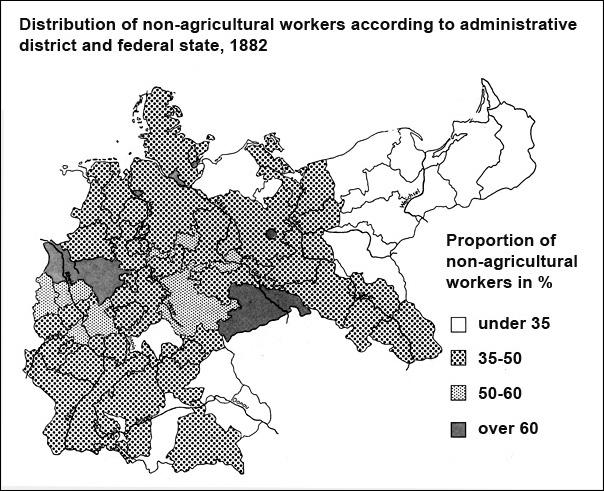Source

Source: Gerhard A. Ritter and Klaus Tenfelde, Arbeiter im Deutschen Kaiserreich 1871 bis 1914. Bonn: Dietz Verlag, 1992, p. 75. English translation: GHI staff.
This map, based on census data from 1882, shows wide variations among German federal states and Prussian provinces in the proportion of their population engaged in non-agricultural employment (that is, in industry, mining, artisanal trades, or commerce). One sees, for example, that agricultural employment predominated in the eastern provinces of Prussia, where barley, rye, wheat, and other grains were grown on Junker estates, and in parts of Bavaria. By contrast, non-agricultural employment was high—over 60 percent—in the densely populated and relatively industrialized Kingdom of Saxony, in the Ruhr district, in Berlin, and in the three city-states of Lübeck, Hamburg, and Bremen.

Source: Gerhard A. Ritter and Klaus Tenfelde, Arbeiter im Deutschen Kaiserreich 1871 bis 1914. Bonn: Dietz Verlag, 1992, p. 75. English translation: GHI staff.